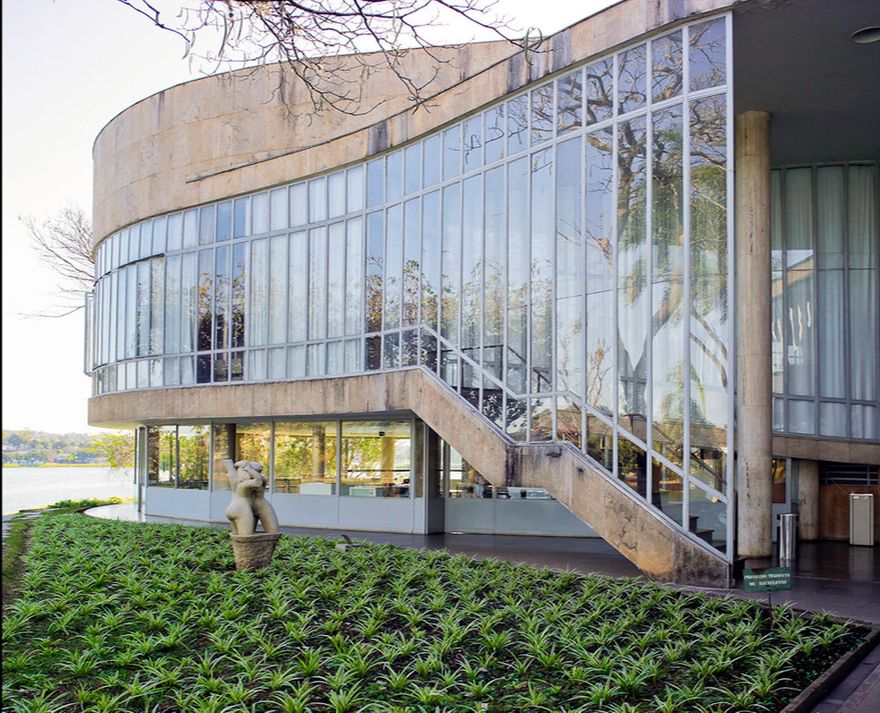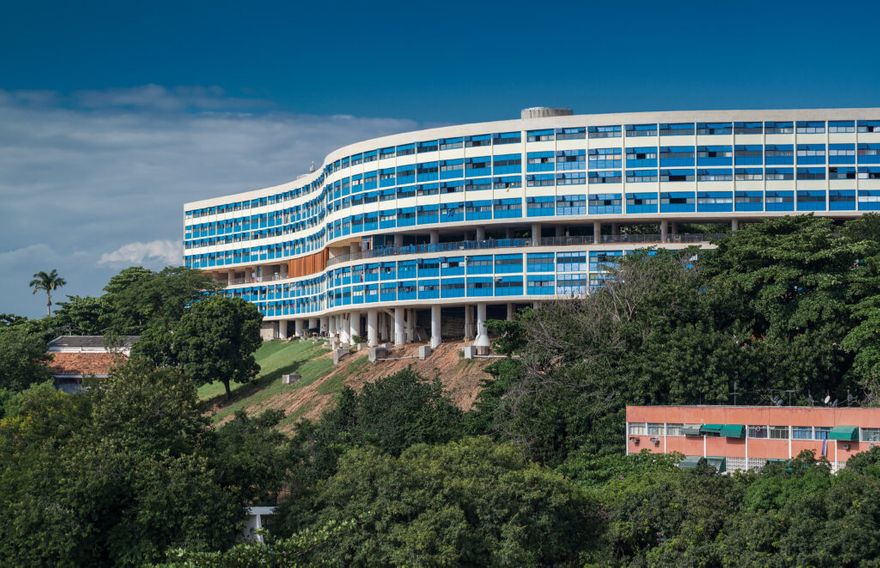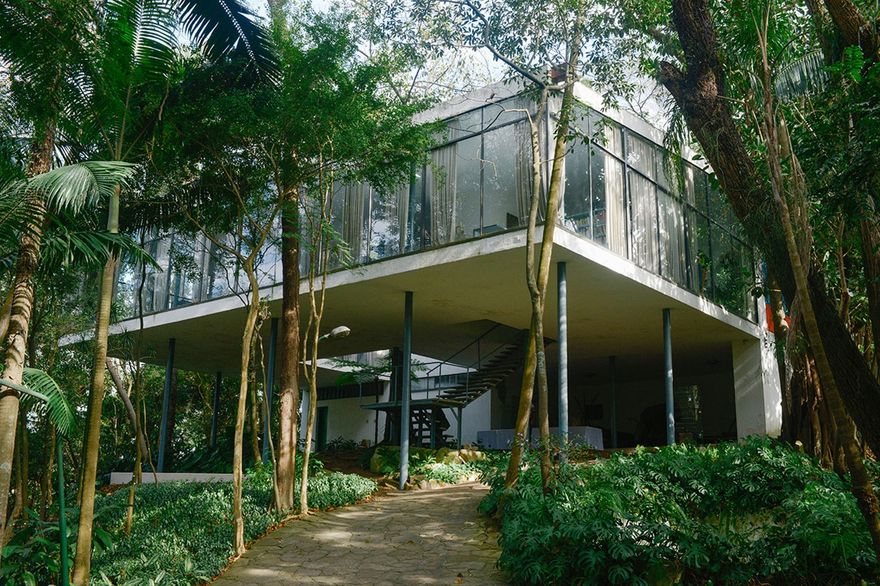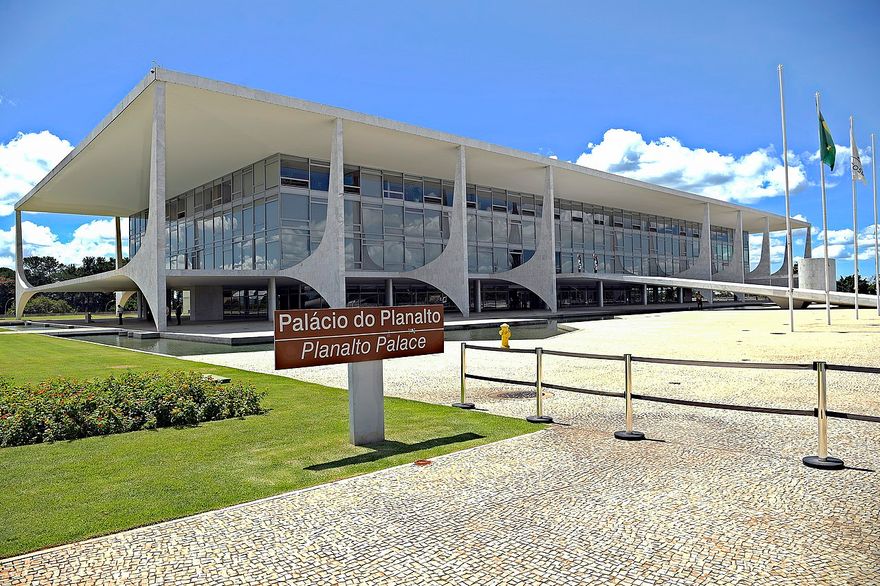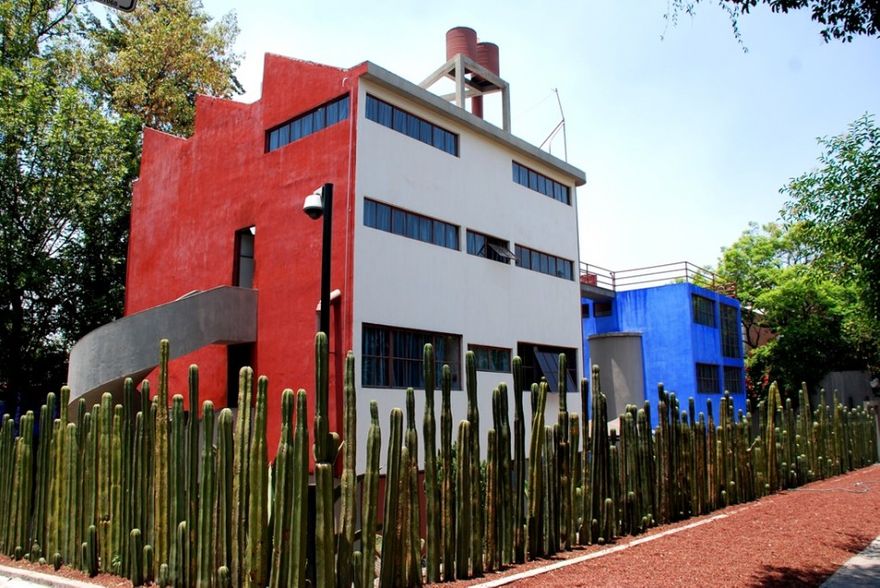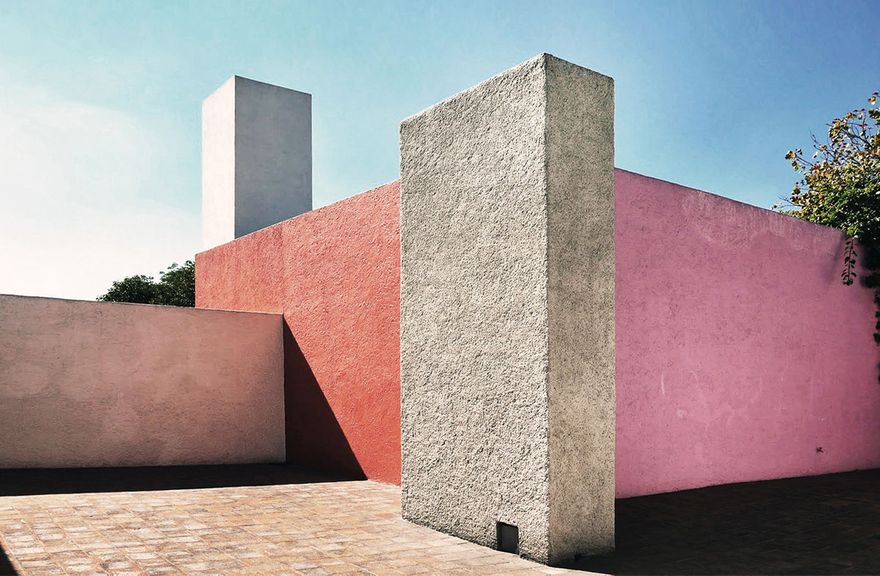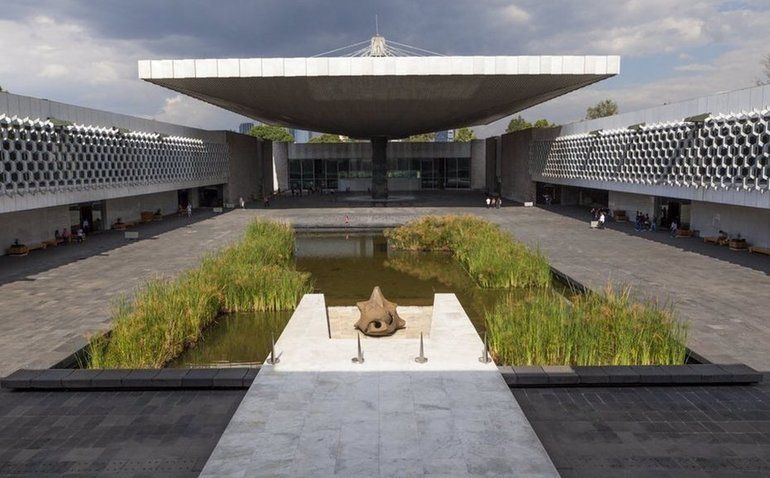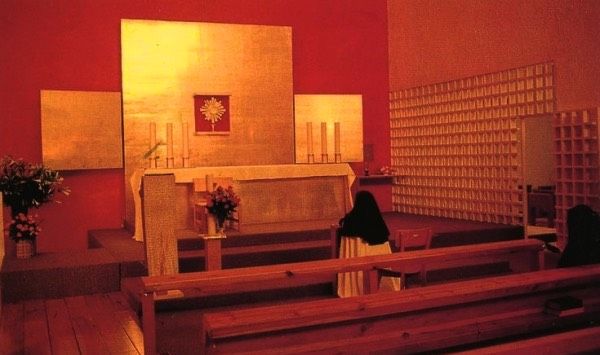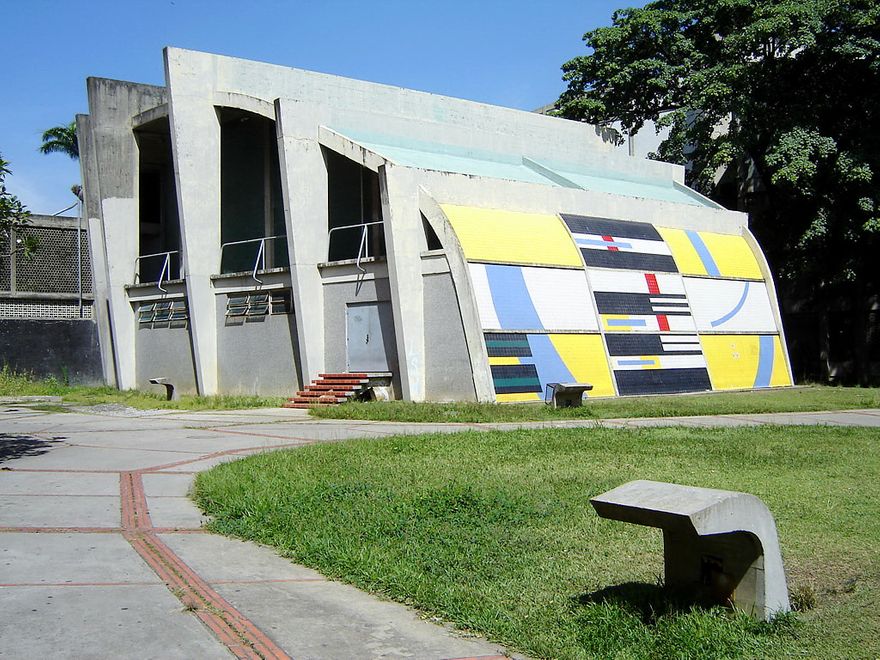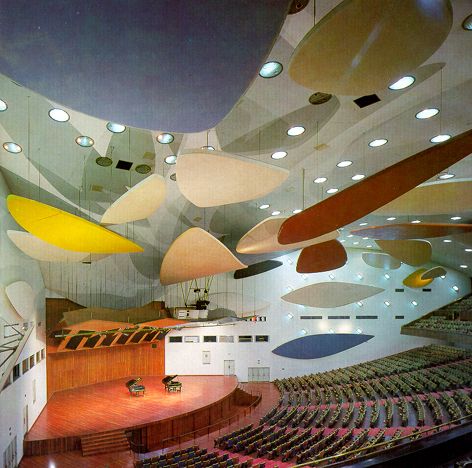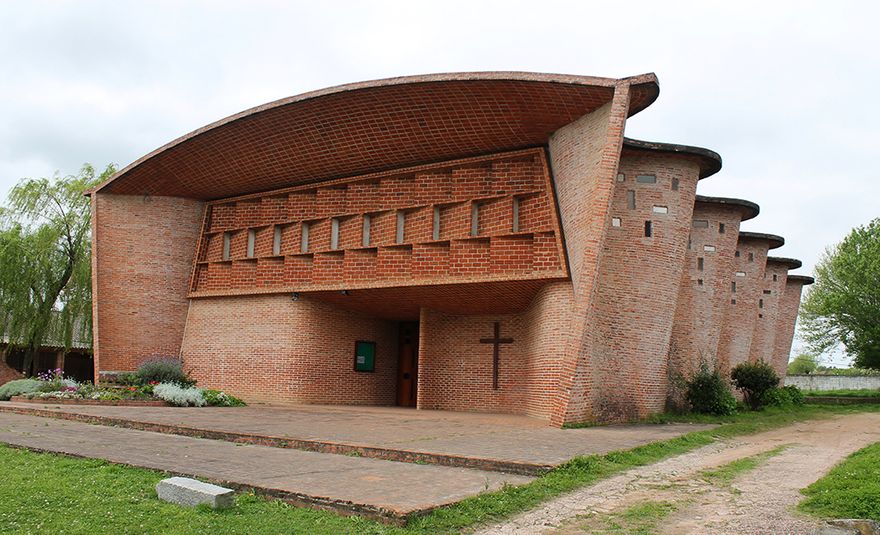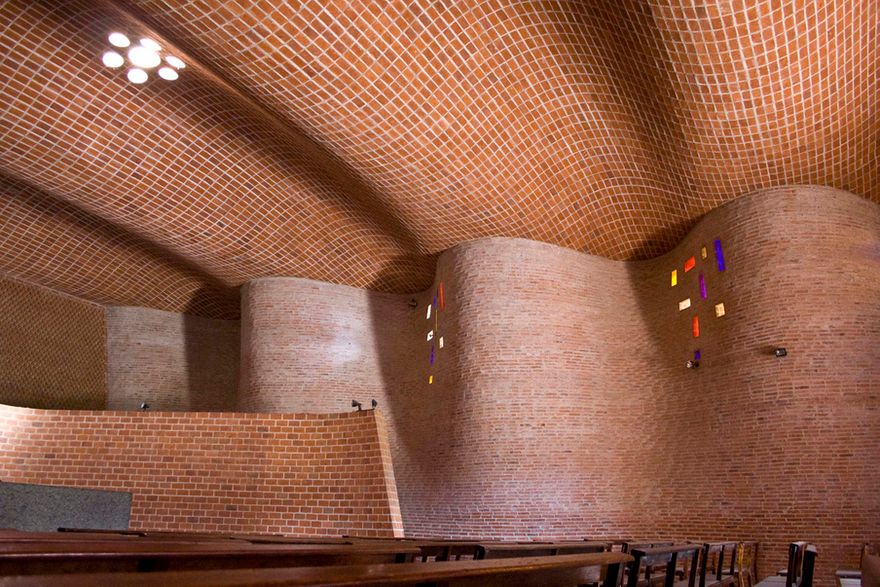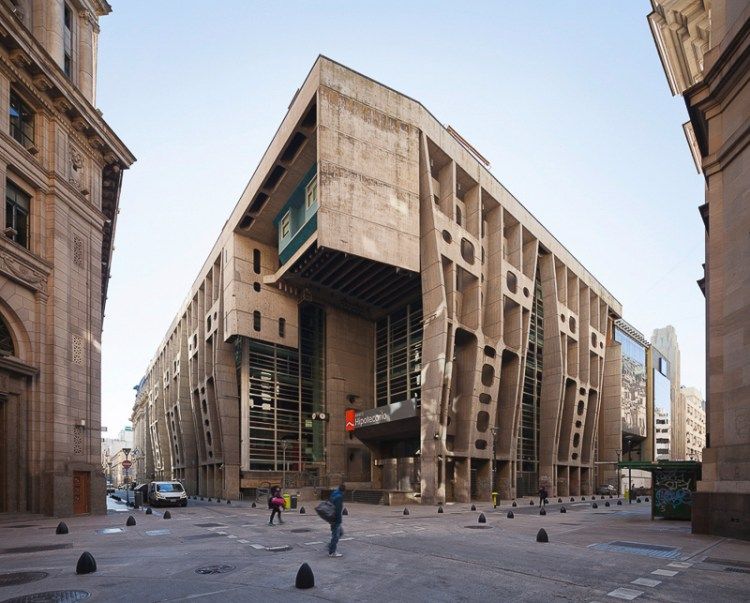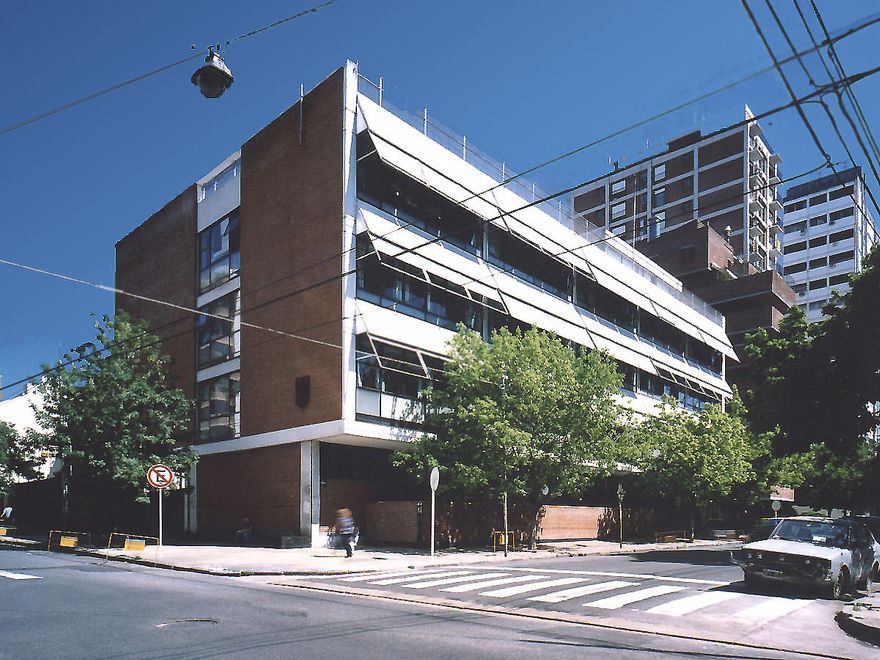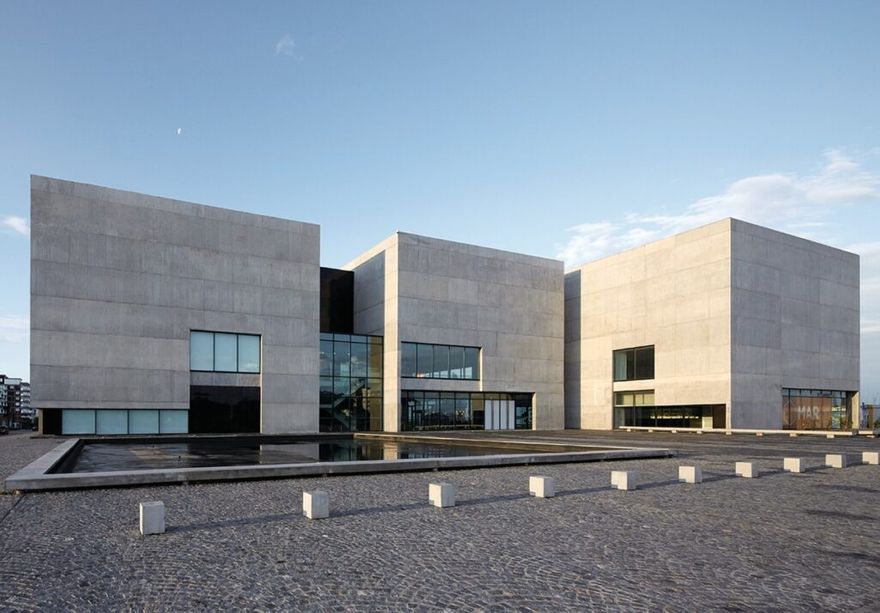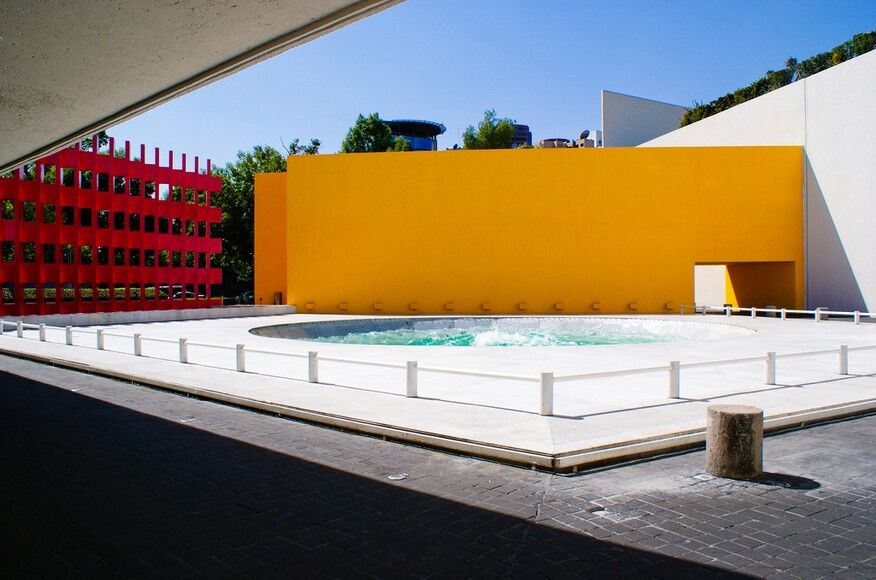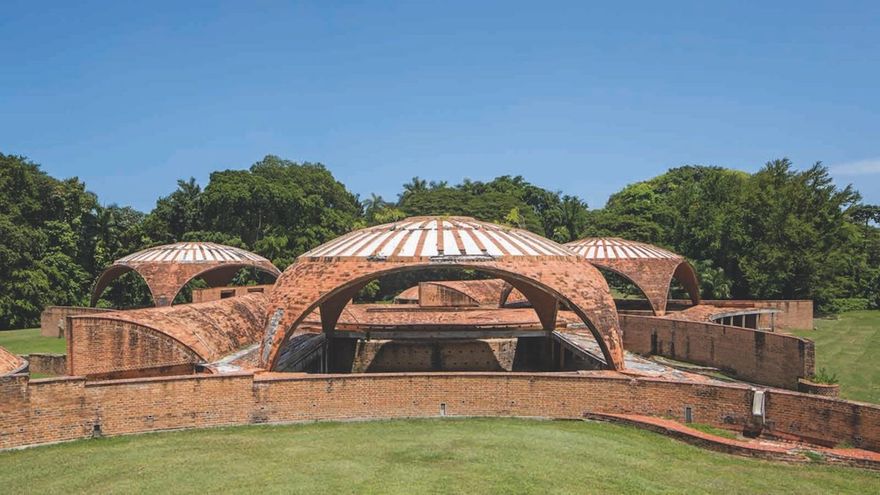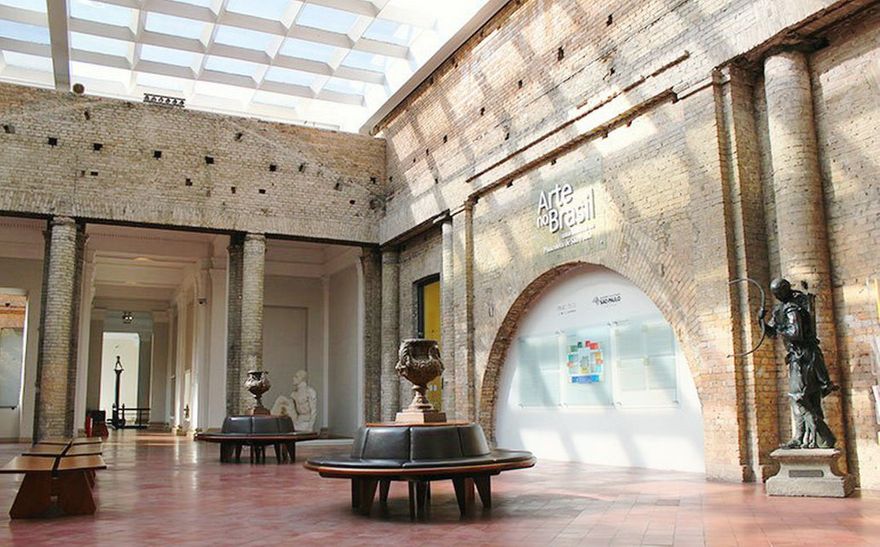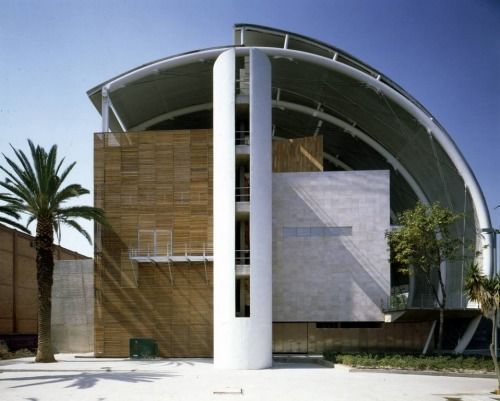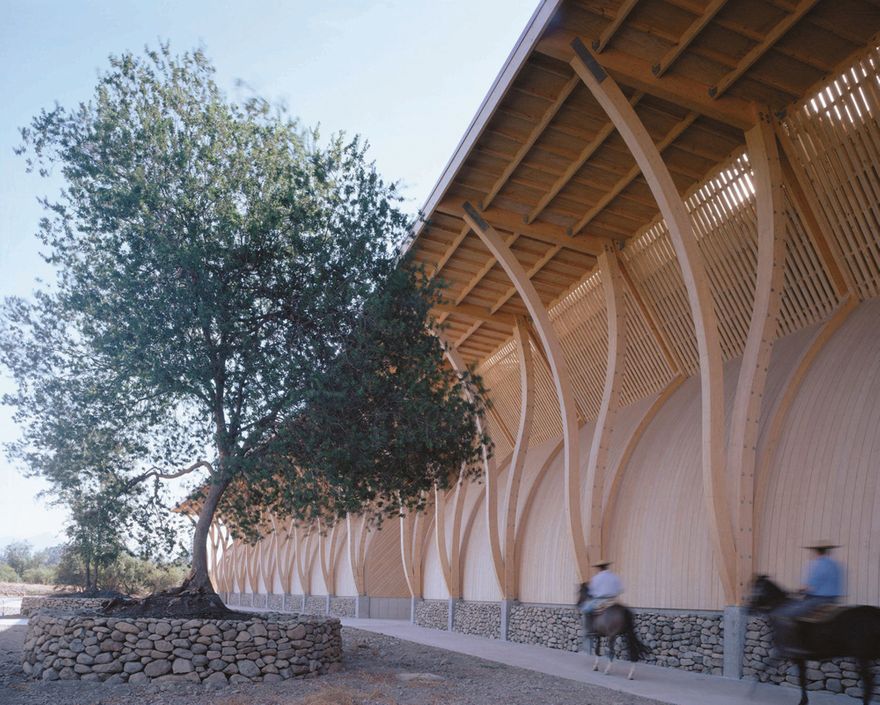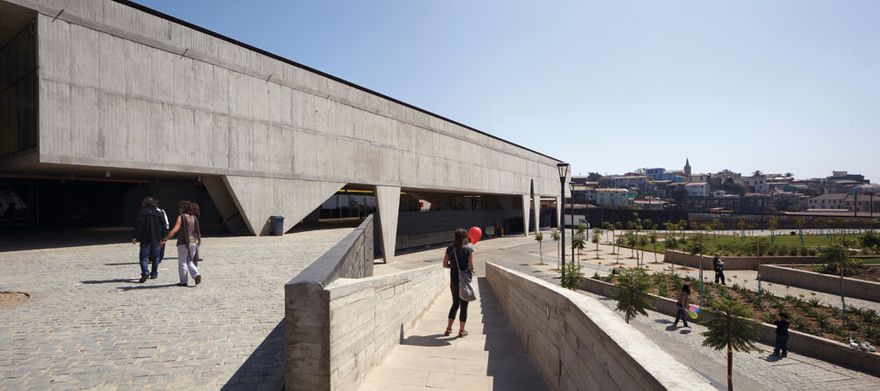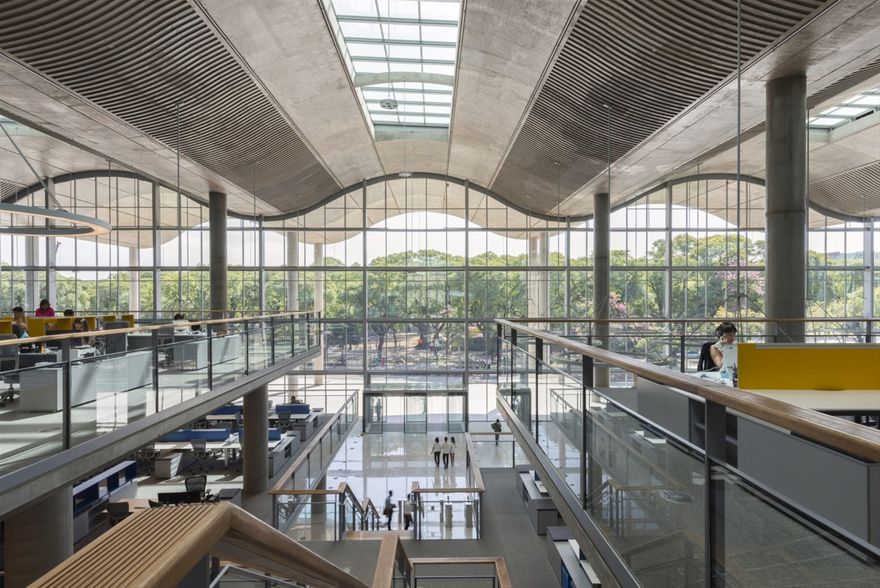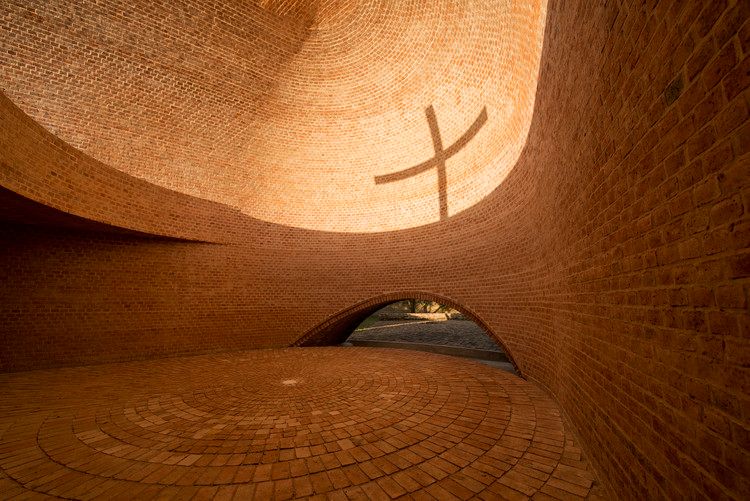Tesdorf Designs
Welcome to Architectural Information
LATER LATIN AMERICAN ARCHITECTURE
A RESOURCE FOR THE STUDY OF THE HISTORY & THEORY OF ARCHITECTURE IN LATIN AMERICA POST 1920
THE BIRTH OF MODERN ARCHITECTURE, C. 1929–65 BRAZIL
In 1929, when the Swiss architect Le Corbusier was invited to give lectures in Argentina, Uruguay, and Brazil, he was received by countries that were ready to apply and transform European Modernism in the face of the pressing needs of their new and vibrant economies. By the time Le Corbusier returned to Brazil in 1936 to work with Lúcio Costa and his team of young architects—Oscar Niemeyer, Affonso Reidy, Carlos Leão, Ernani Vasconcelos, and Jorge Moreira—on a university campus and the Ministry of Education, modern architecture had already taken hold throughout Brazil, Argentina, and Uruguay.
The first works of modern architecture in Brazil were a series of houses built in São Paulo by the Russian émigré Gregori Warchavchik. His house on Rua Santa Cruz (1927–28) is a stark composition of plain white cubic forms whose lines are softened by the extensive use of tropical plants. Warchavchik wrote in his Manifesto of Functional Architecture (1925), “Down with absurd decoration and up with logical construction!” This call for a new architecture based on rational principles came at a time when Brazil was undergoing a significant political and economic change.
In 1935 the new government of Getúlio Vargas, through his education minister, Gustavo Capanema, commissioned Costa and a group of young architects, with Le Corbusier as a consultant, to design a new building for the Ministry of Health and Education. This building would become emblematic of the absorption of the principles of European Modernism within a Brazilian context. A brilliant generation of more than 30 exceptional architects would take the principles of European Modernism and transform them into a truly Brazilian architecture that took advantage of the technological advances of reinforced-concrete construction and the benevolence of a tropical climate, which together enabled a transparent continuity between interiors and exteriors. This generation of Brazilian architects was extremely prolific and produced excellent structures that did not simply reproduce European models but rather evolved into a truly original architecture that was at the forefront of the vanguard worldwide. The central figure of this generation was Costa, who was an excellent architect, planner, and theoretician.
Although Costa’s early work was in the then prevalent Neocolonial style, he soon became a convert to the ideas of Modernism. More than any other architect, he was responsible for the education of a whole new generation of architects and the subsequent cultural transformation of the country. Niemeyer, perhaps the most famous of all Costa’s protégés, was able to transform the Modernist architecture of Le Corbusier and other masters into a unique national language that would open up new alternatives in modern architecture. The Brazilian Pavilion for the New York World’s Fair of 1939, designed by Costa and Niemeyer, with interiors by Paul Lester Wiener, was widely considered the best pavilion in the fair. Its fluid treatment of space was exemplified in its generous curved ramp and the transparency of the curvilinear glass facade opening to an interior court landscaped with a large reflecting pool full of Victoria Amazonian water lilies.
The Seaplane Station (1938), by Attilio Corrêa Lima, was one of the first radically modern buildings built in Rio. An elegant concrete spiral staircase connects the ticketing and luggage hall with the restaurant and viewing terrace on the second floor. The reinforced concrete structure and the sidewalls of the building are faced with travertine, which is in artful contrast to the large expanses of glass that allow the visitor to see through the building.
Shortly thereafter, the Brazilian Press Association Building (1938), by Marcelo and Milton Roberto, incorporated the idea of a fixed brise-soleil that would provide natural light without the heat and glare of the strong tropical sun; it was the first large-scale modern building constructed in Brazil. Future Brazilian president Juscelino Kubitschek, then the mayor of Belo Horizonte, commissioned Niemeyer to design a casino, dance hall, and yacht club for the new development of Pampulha, a garden suburb. The extraordinary casino (1942), sited on a promontory just above an artificial lake, is the first example of a truly original free-form Modernism in Latin America. The building is organised on a square grid of free-standing columns broken by an elegant system of ramps. The main rectilinear building is then modulated by the circular theatre and nightclub that overlooks the lake below. The lyrical ingenuity of the various circulation routes within the building, and the way it engages the landscape, signal the beginning of an organic Modernism that would take hold in Brazil. Perfectly adapted to its tropical climate, the Pampulha complex relies on the surrounding landscape design by Roberto Burle Marx to provide continuity between nature and the new abstract architectural forms.
The Pedregulho Housing Complex (1947–52) in Rio, by Reidy, is one of the first projects commissioned by the government to provide a complete community with housing, parks, schools, shopping, and sports facilities for low-income families. Rio’s Children’s Clinic (1953), by Moreira, is extremely refined in its details and its use of ramped circulation spaces. The Santos Dumont Airport (1939–44) in Rio, by Marcelo and Milton Roberto, with its generous round, columned open gallery, integrates the landscape design of Burle Marx with the airport and the city beyond.
Part of the creative experimentation of Brazilian architecture took place in its residential architecture. Henrique Mindlin’s house for George Hime (1949 or 1950) in Nogueira, Rio de Janeiro state; João Batista Vilanova Artigas’s house (1949) in Campo Belo, São Paulo state; Lina Bo Bardi’s house (1951) in São Paulo; Sérgio Bernardes’s house for Guilherme Brandi (1952) in Petrópolis; and Reidy’s house for Carmen Portinho (1952) in Jacarepaguá, Rio de Janeiro state, are all examples of the extraordinary diversity and formal complexity of this period. Niemeyer’s house (1953) in Canoas, Rio de Janeiro state, is perhaps the best example of an architecture in which the interior space and the exterior landscape are integrated to such an extent that a boundary between the two is not perceived.
The idea for a new capital in the Brazilian interior was begun in 1946 by the regime of Vargas. After Kubitschek was elected president of Brazil in 1955, he commissioned his old friend Niemeyer to design the new presidential Palace of the Dawn (1956–58), and in 1956 he began the process that eventually selected Costa’s master plan for the new capital, Brasília, the quintessential city of the 20th century. It was designed with the Utopian ambition of creating a new capital based on Kubitschek’s socialist agenda and the avant-garde notion of a modern city planned for the automobile. The institute created for building the city, Novacap (Companhia Urbanizadora da Nova Capital do Brasil; the “New Capital Urbanization Agency of Brazil”), hired Niemeyer as its lead architect, and for the next several years Niemeyer designed and built almost all the major buildings of the city.
During the inauguration in 1960, Kubitschek said of Brasília’s architecture: “It did, of course, materialise an aspiration that is even older than our independence as a nation and expressed anew the pioneer spirit that has always characterised the Brazilians; but it is the architectural features of Brasília that reflect the high degree of civilisation in my country, just as Greek and Latin architecture and sculpture reflected the magnitude of Greek and Roman civilisations.”
Costa’s cross-shaped master plan created a linear city that is curved and bisected by a monumental axis containing all the government buildings, centred on the open central axis that is occupied by the domed senate, assembly, and secretariat buildings and leading to the monumental Plaza of the Three Powers. This plaza is flanked on two sides by the Planato Palace for the executive branch on the north and the Palace of the Supreme Court to the south. Because the plaza is almost a quarter of a mile wide, the buildings stand like sculptures in the marked horizon of the landscape beyond. The residential areas are organised around the superquadras, lots that are 290 square yards (about 240 square metres) and contain 10 six-story apartment blocks. Each neighbourhood is organised around four superquadras, which also contain shops, a supermarket, a chapel, a movie theatre, a nursery and primary school, a social recreation club, and a clinic.
The most important shortcoming of this urban strategy is the failure to create a true community within these neighbourhoods, which to this day appear a little desolate. The most successful part of Brasília is the formal beauty of the monumental architecture of the central government district, where the buildings’ ethereal concrete porticos shield the glass facades from the strong sun. The presence of the horizon is pervasive in the openness of the landscaping, designed by Burle Marx, that surrounds the buildings.
The Casino which is now the Pampulha art museum, Belo Horizonte, Brazil, 1940-1942
Pedregulho Housing by Affonso Reidy 1948-1960 Rio de Janeiro, Brazil
The Glass House by Lina Bo Bardi. completed in 1950, in Casa de Vidro in Sao Paulo
Planalto Palace, construction started July 10 1958-1960 renovated 2009-2010 designed by Oscar Niemeyer
MEXICO
During the 1930s, when the political and economic reconstruction of Mexico was underway, modern architecture seemed more suitable for the construction of the schools, hospitals, and public housing of the new state than did the previous Neocolonial style. The Institute of Hygiene (1925) in Popotla, Mexico, by José Villagrán García, was one of the first examples of this new national architecture. The studio designed by Juan O’Gorman in San Angel, Mexico City, for Diego Rivera and Frida Kahlo (1931–32)—which was inspired by Le Corbusier’s studio in Paris for the French painter and theoretician Amédée Ozenfant—is a fine example of vanguard architecture built in Latin America. Mexico’s first project of high-density, low-cost housing was the Centro Urbano Alemán (1947–49), Mexico City, by Mario Pani.
Perhaps the most ambitious project of modern architecture was the construction, begun in 1950, of the campus for the National Autonomous University of Mexico in Mexico City, which was built under the direction of Enrique del Moral, Pani, and Carlos Lazo. This new campus followed a trend for cities with universities being built in Rio and Caracas, and it was the perfect project to put modern architecture and planning into practice. In the new campus, the art of the Mexican muralists was incorporated into the architecture, beginning with Rivera’s relief in the new Olympic Stadium (1952), by Augusto Pérez Palacios, Jorge Bravo, and Raúl Salinas. The Rectory (1952), by Pani, del Moral, and Salvador Ortega Flores, includes murals by David Alfaro Siqueiros.
Perhaps the best integration of mural art with the new architecture is seen in the University Library, by O’Gorman, Gustavo Saavedra, and Juan Martínez de Velasco, which features a monumental mosaic design on the facade by O’Gorman.
This was a period of diverse experimentation and even structural innovation, as seen in the thin-shell concrete structures by the Spanish architect Felix Candela, such as his Church of the Miraculous Virgin (1953) in Mexico City and the Cosmic Ray Pavilion (1952) on the university campus. The integration of art and architecture became a constant in Mexican modern architecture, which can be seen in the extraordinary courtyard of the Anthropology Museum (c. 1963–65) in Mexico City, by Pedro Ramírez Vázquez.
Another side of Mexican modern architecture is represented in the work of Luis Barragán. The houses that he designed in the 1950s and ’60s explored a way to reconcile the lessons of Le Corbusier with the Spanish colonial tradition. This new synthesis created a completely original Modernist architecture that is uniquely adapted to its environment. In his own house in Mexico City (1947–48), he used a dark, narrow entrance corridor to mark the transition between the intense light and public character of the street and the intimacy and controlled light of the interior, and he transformed the roof garden into a dreamlike enclosed room open to the sky.
In the Tlalpan Chapel (1952–55), his use of light is masterful; it enters the chapel from above and reflects the altar he designed with the artist Mathias Goeritz. Barragán’s residential work shows how the relationship between man and nature can be incorporated within the patterns of everyday life. The integration into the design of pools of water for the horses’ use, the creation of a private rooftop garden utilizing vibrantly coloured walls, and the design of a wooden shade for a bedroom window to block harsh sunlight make the ordinary parts of a house into spaces for contemplation.
Casa O' Gorman and Casa Estudio Diego Rivera y Frida Kahlo designed by architect Juan O' Gorman 1929-1932 in Mexico City
Luis Barragan House in Miguel Hidalgo district, Mexico City 1948
Mexico National Museum of Anthropology, Mexico City 1964 by Pedro Ramírez Vázquez, & Rafael Mijares Alcérreca
Capilla de las Capuchinas Sacramentarias (1952–55), designed by Luis Barragan, Tlalpan, Mexico City
VENEZUELA
As did the rest of Latin America, Venezuela saw the beginning of modern architecture in the 1930s with Art Deco. The best examples of this are several government buildings in Caracas: the new City Hall (1933), by Gustavo Wallis; the Ministry of Public Works (1934–35), by Carlos Guinand Sandoz; and the Museum of Fine Arts (1935–36), by Carlos Raúl Villanueva. At the same time, Villanueva and Luis Malaussena Pimental designed the Venezuelan Pavilion for the Paris World’s Fair of 1937 in the official Neocolonial style. By the end of the 1930s, the first truly modern works had been built: the Fermin Toro School (1936) in Caracas, by Cipriano Domínguez, who had worked in Le Corbusier’s studio in Paris, and the Gran Colombia School (c. 1939–42) in Caracas, by Villanueva. Art Deco elements of the Gran Colombia School are evident, for example, in its streamlined horizontal windows and the rounded corners on the tower adjacent to the large clock. It has an L-shaped plan with open-air corridors, terraces, and stairs facing the courtyard; all of the classrooms have large glass doors that open to a terrace.
The redevelopment of the El Silencio neighbourhood in Caracas was the first large-scale urban-renewal project in Latin America. The project completely restructured a slum in the heart of downtown and created a new downtown with new housing. Villanueva undertook this enormous task from 1941 to 1945. The result was the creation of a new public square with several arcade-lined streets. The exterior of the perimeter housing blocks, with their Neocolonial arcades, continued the vocabulary of the centre, while the interior of the courtyards and balconies expressed a modern vocabulary.
It was during the 1950s that modern Venezuelan architecture flourished and began to transform orthodox European Modernism into original forms that were suited to the local climate and available technology. The Centro Símon Bolívar (mid-1940s–mid-1950s) in Caracas, by Domínguez, is a complex modern building that includes two office towers and a large courtyard connecting the newly renovated El Silencio with the new Avenida Bolivar, a central boulevard planned by the Frenchman Maurice Rotival in the 1930s. In a new city centre farther to the east, the Polar Building (1952–54), by Martín Vegas and José Miguel Galia, presents a modern approach to fenestration. Although it is a concrete structure with large cantilevers in two directions, the general organisation of the plan and the curtain wall in aluminium and glass exhibit the rigour of Ludwig Mies van der Rohe, who was Vegas’s teacher at the Illinois Institute of Technology in Chicago.
Without a doubt, the most important Venezuelan project of the 1950s was the new University City of Caracas, the main campus of the Central University of Venezuela (c. 1944–60), designed by Villanueva. Formed by nearly 40 buildings on about 500 acres (about 200 hectares), it represents an extremely effective use of architecture and landscape to create an environment of intellectual freedom and creativity. Originally modelled after a traditional English or U.S. university campus with courtyards, the university’s master plan was modified by Villanueva about 1950, resulting in perhaps the first attempt at modern urbanism. The new spatial organisation broke away from traditional hierarchies, and the entire campus is an array of plazas, covered walkways, parks, buildings, and public art. The artworks are integrated into the buildings, sometimes as murals and other times as freestanding sculptures that activate the public space.
The heart of the university is the 3,000-seat auditorium called the Aula Magna (1952–54). The entrance to the auditorium is through a covered plaza, a succession of open and covered spaces with concrete columns and glazed tiles where light is introduced through controlled patios and sunscreens punctuated by works of art. This space is at once an open-air museum and a circulation corridor that unites the administrative offices, the two theatres, and the main library. Villanueva, the American sculptor Alexander Calder, and the acoustic consultants Bolt, Beranek, and Newman worked closely together to create a theatre that proposed a new conception of space. Exploiting the eye’s ability to focus within a curved space, the bifocal parallax mechanism—which allows for the perception of distance—is challenged by this fish-eye effect and by the strong interaction of colour in the floating sculptural objects. The space expands and contracts, submerging the spectator in a perceptive oceanic tension in which the forms link the spectator and the audience.
University City of Caracas Auditorium, 1944–60, designed by Carlos Raoul Villanueva.
Interior of Aula Magna at University of Caracas 1944–60, designed by Carlos Raoul Villanueva.
URUGUAY
During the 1920s and ’30s in Uruguay, the political climate of liberalism, in conjunction with a prosperous and educated population, created an ideal environment for the reception of modern architecture. The new public schools in Montevideo designed by Juan Antonio Scasso in 1926 exhibit a rational scheme of simple volumes. The design for the new Municipal Palace (1930) of Montevideo, by Mauricio Cravotto, although a symmetrical composition, is rendered in a modern vocabulary. The Montevideo department store Lapido (1929–33), by Juan Aubriot and Ricardo Valabrega, is a good example of the new Modernist architecture that quickly took hold in Latin America after Le Corbusier’s famous lectures of 1929.
The central figure in Montevideo was Julio Vilamajó, who designed the Faculty of Engineering there in 1937. The spatial sequences on the ground floor, the articulation of the different volumes, and the complex functions of the building are typical of his architecture. His concern for honesty of expression through the correct use of materials and structure is evident in all his work and also in his role as an educator in the School of Architecture of Montevideo’s University of the Republic, which in the 1930s was the most advanced in all the Americas.
When Joaquín Torres García returned to Montevideo in 1934 to set up a school, he was part of a group of artists who—like Piet Mondrian and Theo van Doesburg in Paris—considered abstraction the highest expression of the human spirit. At the same time, he felt it was important to incorporate symbols into his work without negating the basic principles of abstraction. His Taller Torres García, established in 1943, launched the careers of many artists, including Augusto and Horacio Torres, Julio Alpuy, and Gonzalo Fonseca. The ideas of Taller Torres García regarding the integration of art and architecture would have a great impact on architects both in Uruguay and in Buenos Aires. Mario Payssé-Reyes was a student of Vilamajó and inherited his studio at the School of Architecture. His seminary for the archdiocese of Montevideo (1954) is a large complex organised around several patios. The use of brick and the collaboration with Horacio Torres in the wall reliefs, doorways, and more make this perhaps the best example from the region of the ideal of integrating the arts.
The work of Eladio Dieste built upon the constructive approach to the arts advocated by Taller Torres García. Dieste was able to invent a new structural system based on the amalgamation of brick, mortar, and iron. In his Atlántida Church (1957–58) the brick walls and roof undulate in ways that are disorienting. In the interior, the articulation of space and light is achieved by the inflection of the ceramic structures with an unusual geometry that contradicts traditional masonry techniques. He also used this technique in his designs for industrial warehouses and factories, such as the Agroindustrias Massaro (1955) in Canelones and the Frugoni Warehouse (1955) in Montevideo.
Atlántida Church designed by Eladio Dieste from 1957–1958 in Atlantida near Montevideo
Interior of the Church of Atlantida by Eladio Dieste at Atlántida Church near Montevideo 1957–1958
ARGENTINA
By the time of Le Corbusier’s Buenos Aires lectures in 1929, there was already a group of Argentine architects working in the modern vocabulary. The project for the Sugar City (1924)—a Marxist, perhaps utopian, experiment in the rural Tucumán province—by Alberto Prebisch and Ernesto Vautier; the office building La Equitativa del Plata (1930) in the centre of Buenos Aires, by Alejandro Virasoro; La Maison Garay (1936) in Buenos Aires, by Jorge Kalnay; the Siemens Building (1927) in Buenos Aires, by Hans Hertlein; and the houses by Alejandro Bustillo for Victoria Ocampo in Mar del Plata (1926) and for Palermo Chico in Buenos Aires (1929) are some of the early manifestations of modern architecture. The Sarmiento School (1937) in Córdoba, by Juárez Cáceres, exemplifies the use of modern architecture to renovate public educational institutions. The development of speculative apartment buildings in Buenos Aires also led architects to apply the Modernist vocabulary in projects such as Antonio Vilar’s building at Ugarteche (1929), Léon Dourge’s Malabia (1933), and Jorge Kálnay’s building (1932) at the intersection of Santa Fe and Rodriguez Peña. The Gran Rex Cinema (c. 1937) in Buenos Aires, by Alberto Prebisch, represents a refined example of a rationalist modern architecture based on simple cubic forms with minimal ornamentation. Perhaps the most eloquent Modernist house built during this time is the Casa Vilar (1935) by Vilar in San Isidro, Buenos Aires.
After working in Le Corbusier’s atelier in Paris, Antonio Bonet returned to Buenos Aires and formed the “Austral” group in 1938 with Jorge Ferrari Hardoy, Juan Kurchan, Horacio Vera Barros, Abel López Chas, and others. They were interested in reacting against the official architecture and design and in developing an Argentine experimental style based on their manifesto of 1939. Perhaps the best result of this collaboration is the steel and leather “Butterfly” chair shown at the Museum of Modern Art in New York City and then manufactured by Knoll International. Bonet’s Berlingieri House (1946) and his hotel and restaurant, Solana del Mar (1946), both in Punta Ballena, Uruguay, show the influence of a vernacular period in Le Corbusier’s houses of the 1940s, with their barrel vaults and infill brick. The apartment house at Virrey del Pino (1943) in Buenos Aires, by Jorge Ferrari Hardoy and Kurchan, includes a Corbusian double-height terrace.
Amancio Williams and César Janello formed their style in the early 1940s, under the influence of the nonfigurative avant-garde Madí group and the teachings of Tomás Maldonado. The search for a design methodology that was a result of an objective arrangement of technical data, without any nonessential illusion, found its expression in the work of Williams, especially in the house he built for his father, the House over the Brook (c. 1945) in Mar del Plata, and unbuilt projects such as the Houses in Space (c. 1943), the Buenos Aires Airport (1945), and the Suspended Office Building (1946). This work was central to the debates around abstract art versus concrete art in the circle of artists that included Lidy Prati and Maldonado.
The Bank of London (1960–66), in Buenos Aires, by Clorindo Testa, Santiago Sánchez, Elía Federico Peralta Ramos, and Alfredo Agostini, used large-scale concrete piers on the facade in order to leave the interior of the banking hall free of columns. The structure’s rough concrete forms and complex space, where the upper three stories appear to float while bridges link the different horizontal planes, make this building a prime example of the Brutalist architecture of the early 1960s. Perhaps Argentina’s most elegant modern architecture in the 1960s was that of Mario Roberto Álvarez. His architecture demonstrated clarity of structure and a refined choice of materials. His Belgrano Day School (1964) in Buenos Aires and Theatre and Cultural Center San Martín (c. 1953–64) are examples of his sobriety of expression.
In 2009 the governor of the province of Buenos Aires called a National competition for the construction of a museum of contemporary art in Mar del Plata, which by design and content enriches the social, productive, and cultural life of the region. Among the 200 projects submitted, the jury chose the one by Studio Monoblock.
The Bank of London (1960–66), in Buenos Aires, by Clorindo Testa, Santiago Sánchez, Elía Federico Peralta Ramos, and Alfredo Agostini,
Belgrano Day School designed by Mario Roberto Álvarez.(1964) in Buenos Aires
Museum of Contemporary Art at Mar del Plata, by Estudio Monoblock 2011-2015
Camino Real Hotel in Mexico City by Ricardo Legorreta 1968
CONTEMPORARY ARCHITECTURE, C. 1965–THE PRESENT
The quality of architectural production since about 1965 does not live up to the standards that were set during the “golden age” of Latin American architecture from roughly 1929 to 1960. This could be the result of diminishing economic resources coupled with the loss of faith in the process of modernisation in developing Latin American economies. Nevertheless, some exceptional work has been produced during this period throughout the Americas.
In Cuba, the major buildings of interest constructed after 1960 are Ricardo Porro and Vittorio Garatti’s art schools in Havana (1962–65). The serpentine form of Porro’s School of Plastic Arts and Modern Dance School and Garatti’s Ballet and Music School use brick vaults and domes to create dramatic, well-lit spaces. The National Art Schools (Escuelas Nacionales de Arte) of Cuba is one of the most important educational institutions of the Cuban nation and has been declared as a "National Monument". Cuba's National Art Schools (Escuelas Nacionales de Arte, now known as the Instituto Superior de Arte) are considered to be the most outstanding architectural achievements of the Cuban Revolution. These innovative, organic Catalan-vaulted brick and terra-cotta structures were built on the site of a former country club in the far western Havana suburb of Cubanacán, which was considered to be Havana's "Beverly Hills", and was reserved for Communist Party officials
In Chile, Emilio Duhart’s United Nations (1966) building on the outskirts of Santiago is a monumental concrete building in the form of a square, with a large court occupied by the assembly buildings. The main assembly hall is shaped in the form of a helicoidal ziggurat, giving the building a strong presence in relation to the surrounding Andean landscape.
Chile has produced a refined architecture that combines a respect for early Modernism with sensitivity to materials and construction techniques. The work of Christian de Groote is rooted in the landscape at the particular conditions of the site. His Fuenzalida House (1984) in Santiago is a long and narrow house that is framed by two parallel brick walls, which establish a horizontal line within the landscape and serve to give structure to the interior and exterior spaces. The Centro-Maderas Timber Processing Plant (1996) in Santiago de Chile, by José Cruz Ovalle and Juan Purcell, uses large-span wood trusses that have been modulated by a gentle curve (in section) that accommodates a two-story office block within the large warehouse.
The Pizarras Ibéricas Building (1997), by Mathias Klotz, in Santiago de Chile, also uses materials to express the nature of the building. In this case, the stone on the exterior represents a company that supplies thin laminates of stone. The Manantiales Building (1997–99) in Santiago, by Luis Izquierdo, Antonia Lehman, Raimundo Lira, and José Domingo Peñafiel, organises the structure to reflect the static forces of the building and makes them legible on the facade. Situated on the coast of Chile, the Casa Pite (2003–05), by Smiljan Radic, is a refined integration of cantilevered prismatic volumes that seem to be floating on a rocky cliff overlooking the ocean.
In Colombia, the Torres del Parque (1965), by Rogelio Salmona, is a housing project with 294 units. The three brick-lined towers are shaped to evoke the inverted cone of the adjacent bullring. Salmona had worked from 1948 to 1955 in Le Corbusier’s studio in Paris with other architects from Latin America, such as Teodoro González de León from Mexico and Augusto Tobito from Venezuela. Salmona’s Casa de Huespedes (1980) in Cartagena has its origins in an abandoned fortification on this island site. This guesthouse for the president, made of coral stone, is organised around a courtyard and roof terraces that relate to the landscape. The house is a perfect synthesis of modern spaces that incorporates the Islamic garden, the courtyard, and roof terraces that recall the old fortifications.
In Venezuela, Jesús Tenreiro-Degwitz’s Corporacion Venezolana de Guayana Headquarters in Cuidad Guayana (1967–68) was the first building to be erected in the centre of this new city. It is an elegant pyramidal structure built in steel, with large infill brick panels inset as sunscreen. This structure is a synthesis of Louis I. Kahn and Mies van der Rohe but is not imitative of either. In Caracas W.J. Alcock adapted R. Buckminster Fuller’s geodesic dome as the roof for his Poliedro Stadium (1972), creating the biggest span of any aluminium structure. Alcock’s residential work, such as his Lopez House (1974) and Ribereña House (1979), both in Caracas, shows a rigorous concrete frame structure that is adapted to the landscape and infilled with brick. The Edificio Torre Europa (1976), an elegant curtain-wall office building, and the San Ignacio shopping centre (2000), by Carlos Gómez de Llarena, are examples of the best commercial architecture in Caracas. In the 1980s the influence of Italian architect Aldo Rossi was seen in the Palmasola House (1983) in Caracas and in the theatre (1982) and sports centre (1984) for Interalumina in Ciudad Guayana by Carlos Brillembourg. The adaptation of vernacular elements is prevalent in the residential work of Federico Vegas.
Ricardo Legorreta’s Camino Real Hotel (1968) in Mexico City is a masterful composition of courtyards and roof terraces within the walls of one downtown block. This work is indebted to the work of Barragán, applying his methods on a larger public scale. In Mexico, the Brutalism of Teodoro González de León’s Music Conservatory (1994) and the Neo-Barragánesque library (1994) by Legorreta coexist in the new National Centre of the Arts with the work of a younger generation of architects who are influenced by contemporary architecture in Europe and North America. The School of Theatre (1994), by TEN Arquitectos, and the School of Dance (1994), by Luis Vicente Flores, express modernity that reinforces the government’s desire to present a new image of Mexico as an industrialized country with a global presence. The refined work of Alberto Kalach and Daniel Alvarez stands out both in their numerous residences as well as in the San Juan de Letrán Station (1994) in Mexico City. Their Casa Contadero (1997) in Contadero, Mexico City, takes advantage of a steep site to become part of the hill as well as to stand apart from it. The residential work of José Antonio Aldrete-Haas in Mexico City shows both the influence of the attenuated Modernism of the great Portuguese architect Álvaro Siza and continuity with the lessons of Barragán.
In the province of Córdoba, Argentina, the work of Miguel Angel Roca shows the influence of his teacher, Louis I. Kahn, while his restructuring of public squares and pedestrian walks reflects postmodern concerns. The Laboratory for Biotechnology and Ecology (1988), by Jorge Moscato and Rolando Schere, in Chascomús, Argentina, and the summer house (1989) in Punta de las Piedras, Uruguay, by Horacio Baliero and Ernesto Katzenstein, are good examples of the influence of the work and writings of Rossi. A revival of the tradition of rational Modernism, looking toward the architecture of Antonio Vilar and Amancio Williams, has influenced a new generation of Argentine architects such as Pablo Beitía, Claudio Vekstein, Mariano Clusellas, Oscar Fuentes, Roberta and Paula Lavarello, and Sergio Foster. Perhaps the most important work by this group is the Xul Solar Museum (1994–95) in Buenos Aires by Beitía.
The new City Hall of Buenos Aires is a significant addition to the city. It occupies an entire city block in Parque Patricios, and has revitalised a formerly light-industrial area to the south of the city centre. Foster + Partners completed it in 2014.
The varied and inventive work of Pritzker Prize-winning architect Paulo Mendes da Rocha, coming from a tradition of Paulista (São Paulo) architects such as João Batista Vilanova Artigas, Ruy Ohtake, and Eduardo de Almeida, represented Brazil’s best architecture at the turn of the 21st century. Mendes da Rocha’s sensitive restoration and reconstruction of the New Pinacoteca of São Paulo (1993) transformed a 19th-century masonry building, originally designed for the city’s School of Arts and Crafts, into a modern museum with well-lit spaces that are appropriate for both large- and small-scale contemporary art. His remodelling of the Praça do Patriarca in the centre of São Paulo (2002) is organised around an elegant suspended steel canopy that protects a large pedestrian underpass.
The School of Fine Arts in Havana by architect Ricardo Porro built in Havana, Cuba in 1961-1965.
Pinacoteca de Sao Paulo is housed in a 1900 building in São Paulo, designed by Ramos de Azevedo 1905-1911 renovation was conducted by Paulo Mendes da Rocha in the 1990s
Escuela Nacional de Arte Teatral by Enrique Norten y Bernardo Gómez-Pimienta, 1994, Coyoacán, Ciudad de Mexico
Perez Cruz Winery by architect Jose Cruz Ovalle at Paine south of Santiago de Chile, built 2002
Cultural Park at Valparaiso, Chile, by HLPS Architects. built 2011
New City Hall in Buenos Aires designed by Foster + Partners, 2014
Capilla San Bernardo at La Platosa, Cordoba, Argentina, Architects : Nicolás Campodonico built 2015

